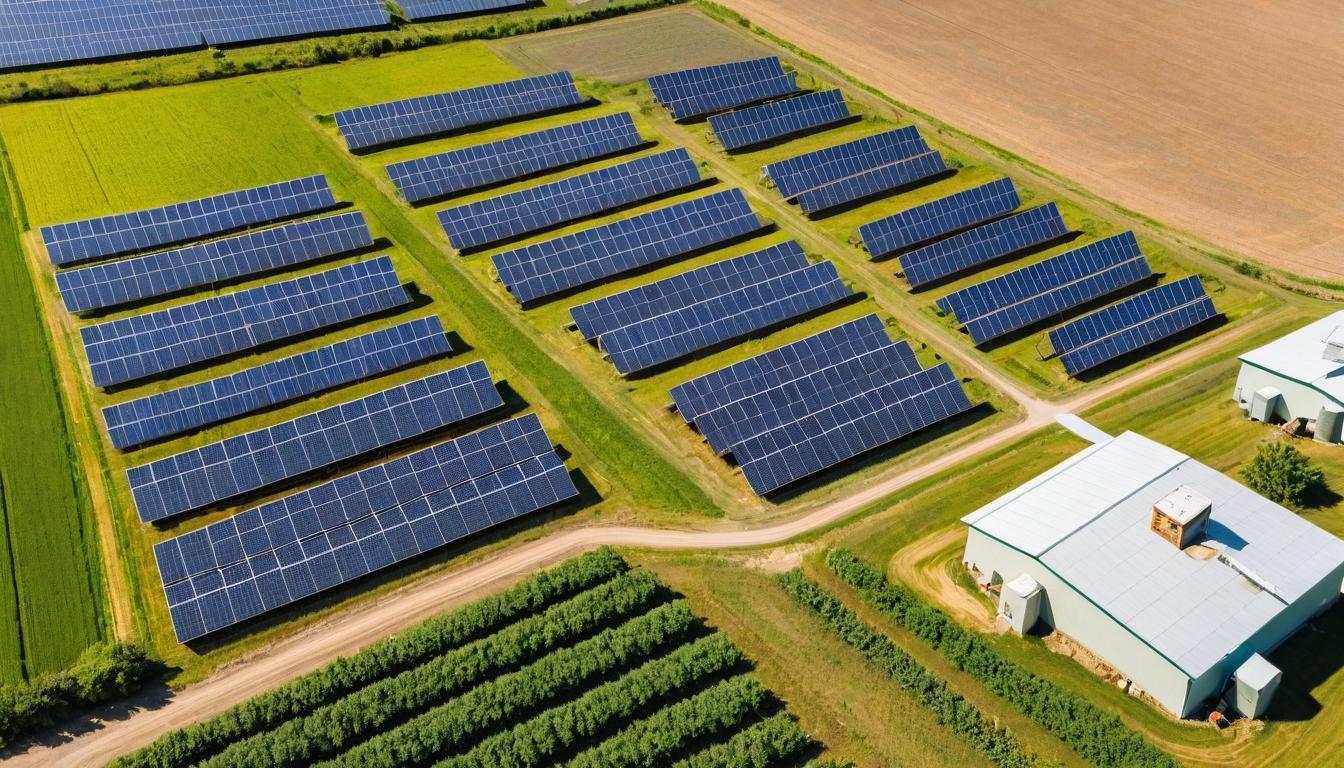While Washington debates climate policy and Wall Street chases billion-dollar green investments, a quiet transformation is happening where you'd least expect it—in the forgotten corners of America's energy landscape. From abandoned industrial sites to rural farmlands, communities are discovering that the future of energy isn't just about building new infrastructure, but about reimagining what we already have.
In West Texas, where oil rigs once dominated the horizon, something remarkable is taking root. Former oilfield workers are now installing solar panels on the same land their fathers drilled for crude. The transition isn't just about swapping one energy source for another—it's about repurposing skills, infrastructure, and community knowledge. These workers bring something Silicon Valley engineers can't replicate: decades of experience managing complex energy systems in challenging environments.
Meanwhile, across the Midwest, farmers are turning their fields into dual-purpose power generators. Agri-voltaics—the practice of combining solar panels with agriculture—is proving to be more than just an efficient use of space. The panels provide shade for crops, reduce water evaporation, and create microclimates that boost yields. One Nebraska corn farmer reported a 15% increase in production while generating enough electricity to power 300 homes. This isn't just renewable energy—it's regenerative energy that enhances rather than competes with food production.
What's driving this grassroots revolution isn't government mandates or corporate initiatives, but simple economics and community pragmatism. Small towns facing economic decline are discovering that renewable projects offer something rare: local control and lasting revenue. Unlike fossil fuel extraction that often sends profits out of state, renewable energy keeps money circulating within communities through land leases, local jobs, and tax revenues that fund schools and infrastructure.
But the transition isn't without its ironies and unexpected challenges. In Pennsylvania, former coal miners are finding new employment maintaining wind turbines, using many of the same mechanical skills they developed underground. The work is safer and pays better, but it requires adapting to a different rhythm and culture. As one former miner turned wind technician told me, "I went from working in the dark to working in the sky—same hands, different world."
The most surprising developments are happening at the intersection of old and new energy systems. Natural gas plants are being retrofitted to run on green hydrogen, extending their useful life while dramatically cutting emissions. Abandoned mine shafts are being converted into gravity batteries, using the same principles that powered grandfather clocks to store renewable energy. Even oil wells are finding new purpose as geothermal sources, tapping into the earth's heat that earlier generations ignored in their rush to extract fossil fuels.
This isn't to suggest the transition is seamless or universally welcomed. There are real conflicts over land use, concerns about visual impacts, and legitimate questions about reliability. But what's emerging is more nuanced than the polarized debates that dominate national media. In community meetings from Arizona to Maine, people are having practical conversations about how to balance preservation with progress, tradition with innovation.
Perhaps the most overlooked aspect of this energy transformation is how it's reshaping rural economies. Renewable projects are creating what economists call "sticky wealth"—assets that can't be easily moved elsewhere. A solar farm or wind turbine represents decades of local investment, unlike a coal mine that can be depleted or a manufacturing plant that might relocate. This creates a different kind of economic stability that's particularly valuable in regions battered by globalization and automation.
The human stories behind these changes are as compelling as the technological ones. I met a third-generation Wyoming rancher who now leases part of her land for wind turbines. The income allowed her to keep the family ranch intact when neighboring properties were being sold off. "The wind was always here," she told me, "my grandfather complained about it, my father tolerated it, and I'm finally putting it to work."
As America's energy transformation accelerates, the most successful approaches are those that honor local knowledge and build on existing strengths. The communities thriving in this new landscape aren't necessarily those with the most advanced technology or biggest investments, but those that understand how to integrate change into their unique social and economic fabric. They're writing the next chapter of America's energy story not in corporate boardrooms or government offices, but in fields, workshops, and community centers across the country.
What emerges from these grassroots innovations may ultimately prove more durable and adaptable than top-down solutions. When people have a stake in their energy future—when they see direct benefits in their schools, their businesses, their landscapes—they become not just consumers of change, but architects of it. And that may be the most powerful renewable resource of all.
The hidden revolution brewing in America's energy backyards

